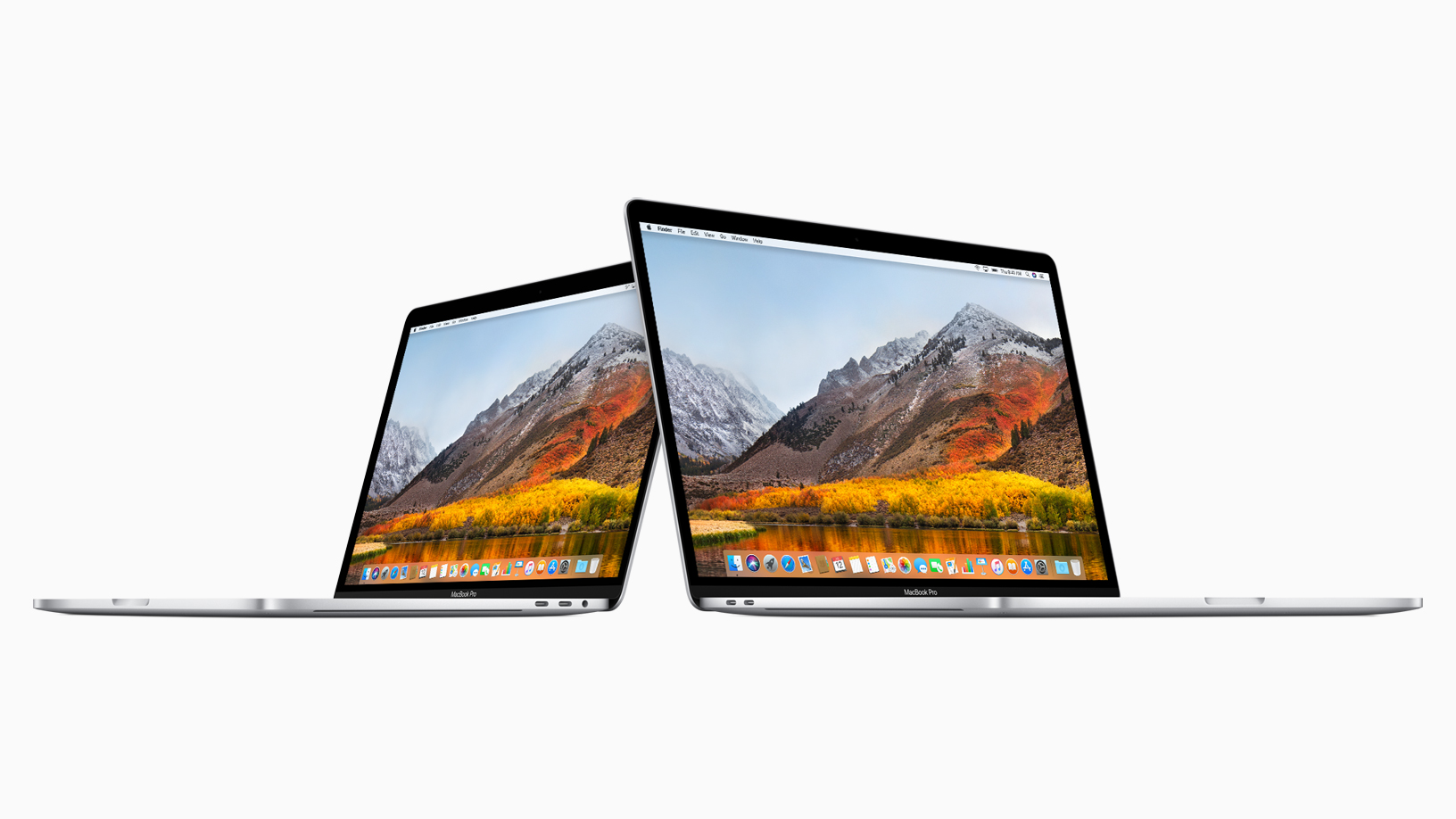Wednesday, July 18th 2018
9to5Mac:
YouTube Video Review of the Blackmagic eGPU
This confirms what I feared: the GPU is not replaceable. However, the enclosure and the price still seems reasonable considering all this. Sadly, it might also be the best Thunderbolt 3 hub available on the market (pricey, but at least it comes with a free Radeon Pro 580).
Update 7-19-2018: Macrumors Reviews The Blackmagic eGPU
Saturday, July 14th 2018

iFixit:
Here’s an inflammatory take for you: Apple’s new quieter keyboard is actually a silent scheme to fix their keyboard reliability issues. We’re in the middle of tearing down the newest MacBook Pro, but we’re too excited to hold this particular bit of news back: Apple has cocooned their butterfly switches in a thin, silicone barrier.
That’s an interesting take (and an interesting solution if that’s what it is indeed). It would be much more reassuring if Apple could put aside all of the politics and say: “We have taken measures to improve the reliability of our laptop keyboards.”
The more cynical take (and I can be quite the cynic) would be that Apple has knowingly released a flawed keyboard on a brand new device. I hope this is not the case.
I, and many others, would likely want to buy a new machine with a “fixed” keyboard to replace a laptop with a known keyboard problem. After all, there's only a four year window for a free-to-the-user replacement.
More: The Outline
Update 7.19.2018: Macrumors.com Confirmed
Thursday, July 12th 2018

Apple:
Apple today updated MacBook Pro with faster performance and new pro features, making it the most advanced Mac notebook ever. The new MacBook Pro models with Touch Bar feature 8th-generation Intel Core processors, with 6-core on the 15-inch model for up to 70 percent faster performance and quad-core on the 13-inch model for up to two times faster performance — ideal for manipulating large data sets, performing complex simulations, creating multi-track audio projects or doing advanced image processing or film editing.
I‘m really glad that Apple is getting into a (mostly) yearly update cycle for their Pro laptops. I'm also glad that this speed bump has decided to use the new Intel quad core i5/i7 for the 13" and the six core i9 for the 15" laptops.
Interestingly enough, the marketing page for these laptops also mentions an eGPU enclosure.
Apple:
Blackmagic Design has created an external GPU (eGPU) ideal for MacBook Pro.14 So you can have desktop-class graphics performance without giving up the portability of a notebook. Housed in an all‑in‑one aluminum enclosure, the Blackmagic eGPU is powerful yet quiet, charges your MacBook Pro using Thunderbolt 3, and has built-in I/O connections to drive both a Thunderbolt 3 display and VR accessories simultaneously. With the Blackmagic eGPU and MacBook Pro, you can accelerate pro apps, create VR content, and enjoy supersmooth gaming anywhere you roam.
The eGPU enclosure is made by Blackmagic. It features a Radeon Pro 580 GPU, 2x TB3 ports and 4x USB3 ports. It costs $699.
More interesting to me is the Razer Core X eGPU. It mostly is due to being given the choice of GPU that goes into the enclosure (is the Blackmagic case GPU removable?). Although with the Core X's base price of $250, after being paired with something like a Radeon Vega 64 (if you can even find one anywhere near MSRP) you will be well over the $699 price of the Blackmagic eGPU.
The Vega 64 seems to beat out the Radeon Pro 580 in most areas (except for price).
Daring Fireball:
Today’s updates are indisputably aimed at genuine “pro” users. Only the high-end machines with the Touch Bar have been updated — the non-Touch-Bar 13-inch MacBook Pro (a.k.a. the MacBook Escape) and the just-plain MacBook are unchanged.
Damn. I'm not really sold on Touch Bar. I don't think it has enough advantages to warrant replacing the Fn key row. I think it would be great to make an appearance above a standard Fn key row... but that's not what Apple is selling. I'd rather get the extra watt hours of battery life that the non-Touch Bar model gets.
This update is a step in the right direction. However, I'm curious to see what the next iMac refresh will see now that the 15" has a six core i9 in it…
More: LaptopMag Benchmarks
Friday, June 29th 2018
Garmin and Suunto have both released their new premium multi-sport watches this week: the Garmin Fenix 5 Plus and the Suunto 9.
As an owner of the current Garmin Fenix 5x (non-plus), I wanted to collect a few thoughts I had while researching both watches.
Garmin Fenix 5 Plus
- The $150 price increase on every model is brutal.
- Pulse Oximetry is interesting. I don’t think I have any real use for it though.
- The UI is starting to feel pretty dated now. It’s interesting that they added some unnecessary animations to it now on the Fenix Plus. I’m not sure this is an improvement.
- I was hoping that there would be a big performance improvement on the maps and navigation side of things. It doesn't appear that this is the case.
- Galileo support seems to be the most interesting feature to come to this device. However, it doesn’t seem like Galileo satellites are widespread yet and the feature is coming to the non-plus Fenix soon (I’m not sure if there are additional antenna improvements that the Plus additionally has to improve reception).
Suunto 9
- The naming is a lot simpler than the Suunto Spartan Ultra Baro HR… although “Suunto” 9 is a lot harder to google for.
- I am getting more and more intrigued by Suunto’s offerings. The release of the Spartan seemed bug-ridden and unstable at best. However, Suunto has steadily been improving the software and features through consistent updates. I can appreciate that.
- Suunto seems even more dedicated and focused on ultra marathon type training and other high elevation mountain based efforts. Their portfolio of sponsored athletes really shows this.
- The battery features of the Suunto 9 seem a lot more interesting to me, personally, than any of the features of the Fenix Plus.
- $599 is still expensive… but it’s a lot more reasonable than $850.
- The interface looks light years ahead of the Fenix.
- I’m still not fully sold on touch screens on a performance watch, but it seems markedly better when it comes to navigating a route. Being able to pinch, pan and tap while navigating would be worlds better than the clunky button interface on the Fenix.
- The navigation screen looks like it runs at more than the 2 FPS that the Fenix can manage.
- No ANT+ support (I realize this is a Garmin specification, but it still hurts).
More: DC Rainmaker on Suunto 9, DC Rainmaker on Garmin Fenix 5 Plus
Tuesday, June 26th 2018
This excellent read was sent to me recently by a friend. There’s a lot of amazing quotes throughout. Here’s just a few that caught my eye.
Alan Kay:
It is probably not an accident that the agglutinative languages all seem to have been instigated by committees, and the crystallization languages by a single person.
Philosophically, Smalltalk’s objects have much in common with the monads of Leibniz and the notions of 20th century physics and biology. Its way of making objects is quite Platonic in that some of them act as idealisations of concepts–Ideas–from which manifestations can be created. That the Ideas are themselves manifestations (of the Idea-Idea) and that the Idea-Idea is a-kind-of Manifestation-Idea–which is a-kind-of itself, so that the system is completely self-describing– would have been appreciated by Plato as an extremely practical joke [Plato].
In computer terms, Smalltalk is a recursion on the notion of computer itself. Instead of dividing “computer stuff” into things each less strong than the whole–like data structures, procedures, and functions which are the usual paraphernalia of programming languages–each Smalltalk object is a recursion on the entire possibilities of the computer. Thus its semantics are a bit like having thousands and thousands of computer all hooked together by a very fast network.
…my emotional involvement has always been centered on personal computing as an amplifier for human reach–rather than programming system design–and we haven’t got there yet.
I have a lot of strange nostalgia for the early days of computing and the internet. It's especially strange considering that I wasn't alive for most of it. Either way, I appreciate the idealism and, in some ways, naïveté regarding how computers would eventually be used and misused.

